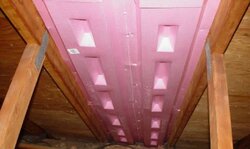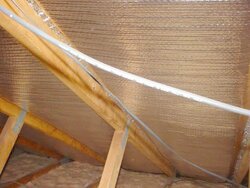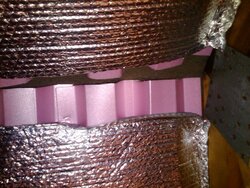Without starting an argument about attic ventilation, as its not germane to the question.
I am looking at increasing my attic ventilation.
I have a whole house fan and think I could use more. And more well spaced. I was in my attic yesterday and noticed a modest amount of dust was actually imbedded into the inside of the ridge vent.
I have a ridge vent across the entire roof. I also have some soffit vents. What is strange is that when you open up the soffit, there is drywall (or something similar to it) above the vents... seems to minimize the venting action, but it still vents (you can smell the "attic" smell coming out when the fan is on). I don’t have any idea if they are working properly, but some venting action is happening. I also have 2 gable vents (I have 3 gables).
I am thinking about putting a large roof vent in, maybe another gable vent in the 3rd gable.
Any recommendations? Larger = better in my opinion as the venting is really intended for venting out the whole house fan as opposed to standard attic ventilation.
Thoughts?
I am looking at increasing my attic ventilation.
I have a whole house fan and think I could use more. And more well spaced. I was in my attic yesterday and noticed a modest amount of dust was actually imbedded into the inside of the ridge vent.
I have a ridge vent across the entire roof. I also have some soffit vents. What is strange is that when you open up the soffit, there is drywall (or something similar to it) above the vents... seems to minimize the venting action, but it still vents (you can smell the "attic" smell coming out when the fan is on). I don’t have any idea if they are working properly, but some venting action is happening. I also have 2 gable vents (I have 3 gables).
I am thinking about putting a large roof vent in, maybe another gable vent in the 3rd gable.
Any recommendations? Larger = better in my opinion as the venting is really intended for venting out the whole house fan as opposed to standard attic ventilation.
Thoughts?


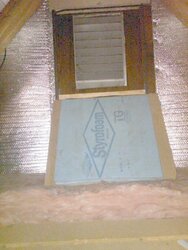
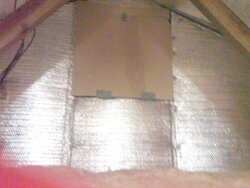

 !
!